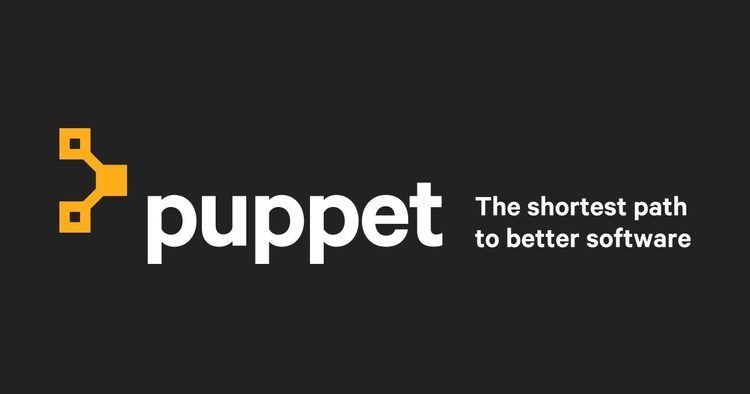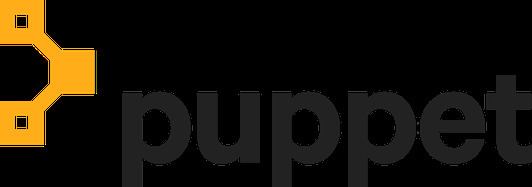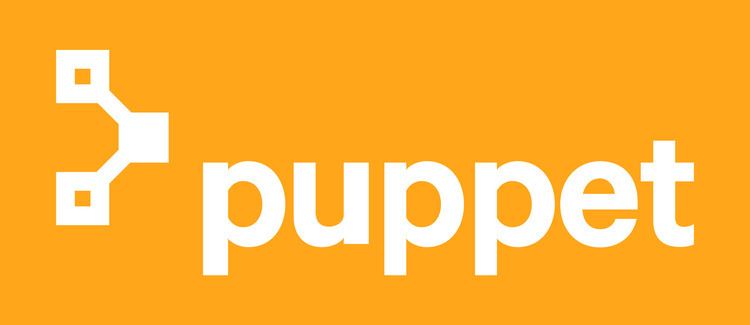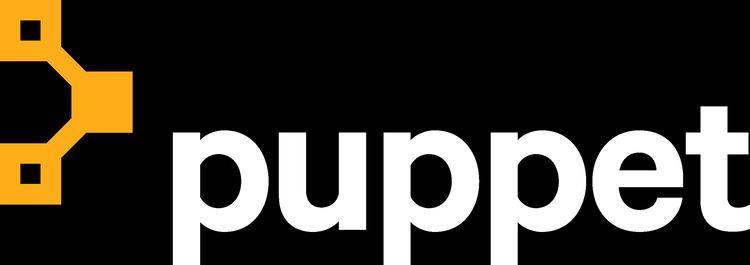Developer(s) Puppet | ||
 | ||
Initial release 2005; 12 years ago (2005) Stable release 4.9.2 (February 10, 2017; 48 days ago (2017-02-10)) [±] Preview release 4.0-rc1 (April 15, 2015; 23 months ago (2015-04-15)) [±] Operating system | ||
In computing, Puppet is an open-source software configuration management tool. It runs on many Unix-like systems as well as on Microsoft Windows, and includes its own declarative language to describe system configuration.
Contents
- Getting started with puppet puppetconf 2013
- Overview
- Architecture
- Characteristics
- Platforms and users
- References

Puppet is produced by Puppet, founded by Luke Kanies in 2005. It is written in Ruby and released as free software under the GNU General Public License (GPL) until version 2.7.0 and the Apache License 2.0 after that.

Getting started with puppet puppetconf 2013
Overview

Puppet is designed to manage the configuration of Unix-like and Microsoft Windows systems declaratively. The user describes system resources and their state, either using Puppet's declarative language or a Ruby DSL (domain-specific language). This information is stored in files called "Puppet manifests". Puppet discovers the system information via a utility called Facter, and compiles the Puppet manifests into a system-specific catalog containing resources and resource dependency, which are applied against the target systems. Any actions taken by Puppet are then reported.

Puppet consists of a custom declarative language to describe system configuration, which can be either applied directly on the system, or compiled into a catalog and distributed to the target system via client–server paradigm (using a REST API), and the agent uses system specific providers to enforce the resource specified in the manifests. The resource abstraction layer enables administrators to describe the configuration in high-level terms, such as users, services and packages without the need to specify OS specific commands (such as rpm, yum, apt).
Puppet is model-driven, requiring limited programming knowledge to use.

Puppet comes in two flavors, Puppet Enterprise and Open Source Puppet. In addition to providing functionalities of Open Source Puppet, Puppet Enterprise also provides GUI, API and command line tools for node management.
Architecture

Puppet usually follows client-server architecture. The client is known as agent and the server is known as master. It can also be used as a stand-alone application.

Puppet Master is installed on one or more servers and the systems that need to be configured install Puppet Agent. Puppet Agents communicate with the server and fetch configuration instructions. The Agent then applies the configuration on the system and sends the status report to the server. Devices can run Puppet Agent as a daemon, that can be triggered periodically as a cron job or can be run manually whenever needed.
Puppet architecture consists of:

Example:

- Every agent send across facter to master.
- Puppet maintains a graphical representation of the list of resources and their interdependencies; depicting the order in which they need to be configured in a ‘catalog’ for every client. Master sends this catalog to the client.
- Configuration already present on the system is known as actual state and the configuration mentioned in manifest file is known as desired state. Agent applies configuration on the system only when actual state is not same as desired state. The clause of applying a state change only if needed is called as ‘idempotency’, which is the key feature of Puppet.
- The result of the applying the configuration is sent across to the server.
Characteristics
Platforms and users
Built to be cross-platform, Puppet works on all major Linux distributions, as well as on other Unix-like systems (Solaris, BSD, Mac OS X, AIX, HP-UX), and has Microsoft Windows support.
Puppet is used by the Wikimedia Foundation, ARIN, Mozilla, Reddit, CERN, Dell, Rackspace, Zynga, Twitter, the New York Stock Exchange, PayPal, Disney, Citrix Systems, Spotify, TubeMogul, Oracle, Yandex, the University of California Los Angeles, the University of North Texas, the Los Alamos National Laboratory, Stanford University, Purdue University, Lexmark, QVC, Intel, Bright Computing and Google, among others.
